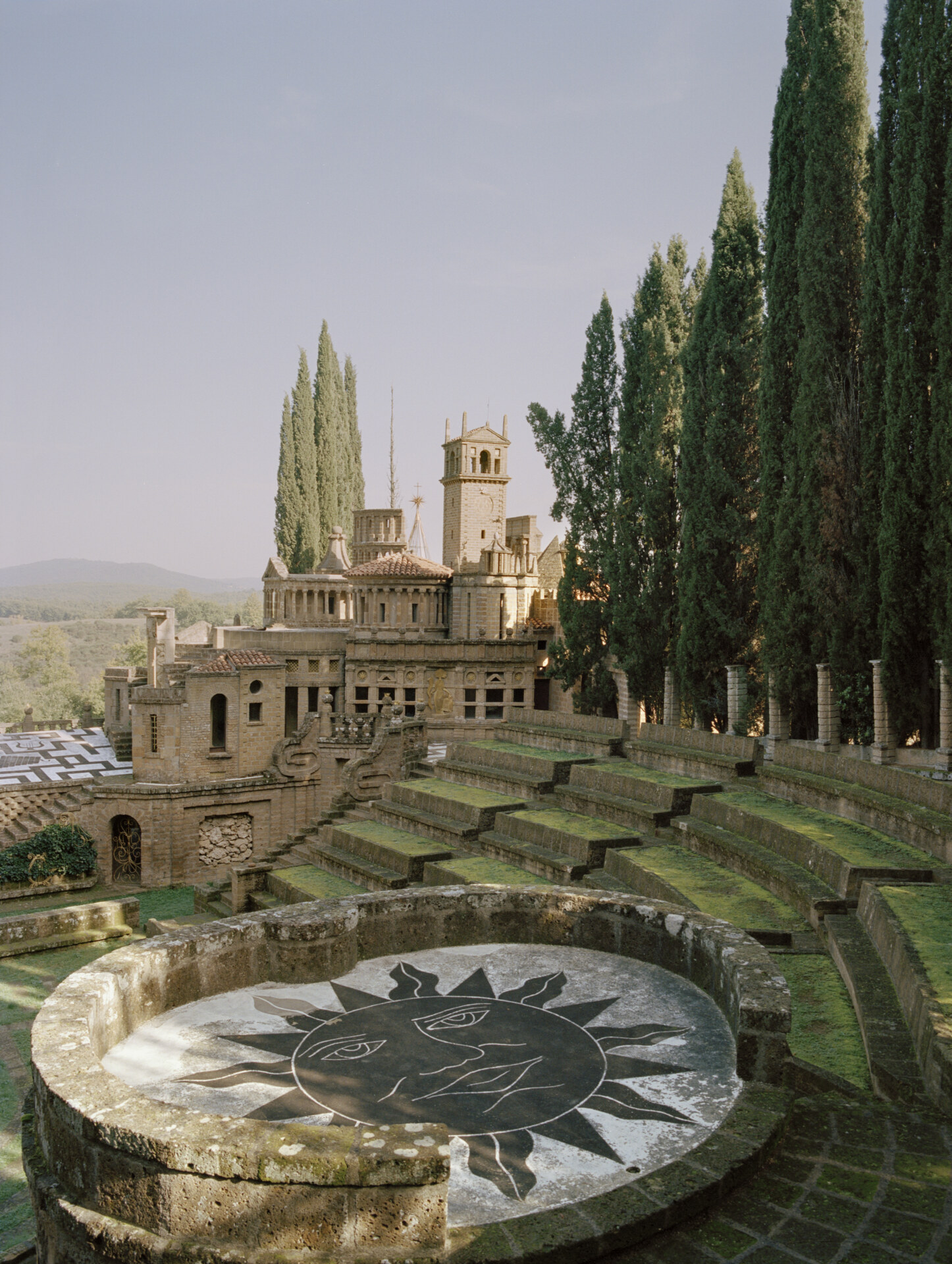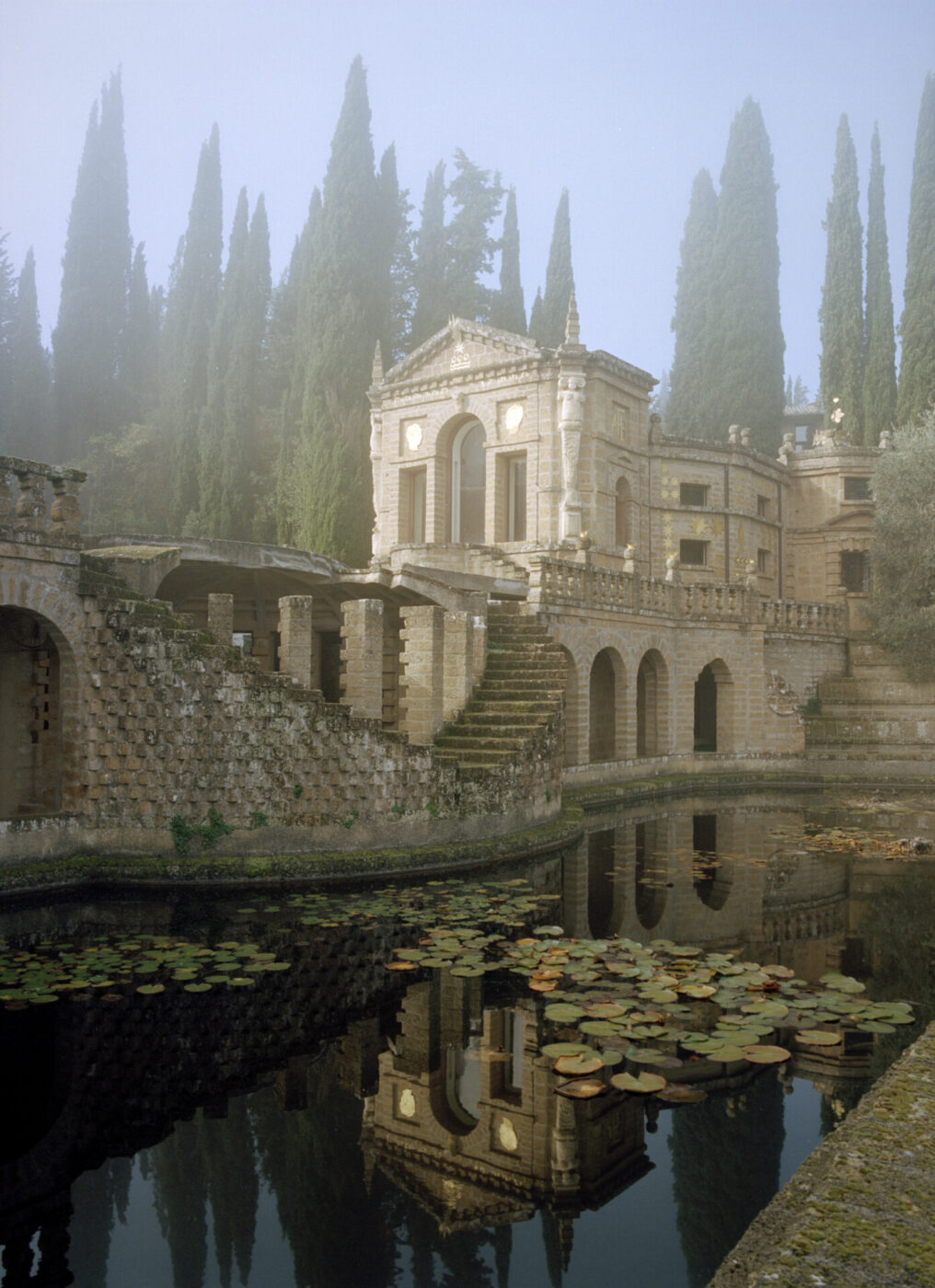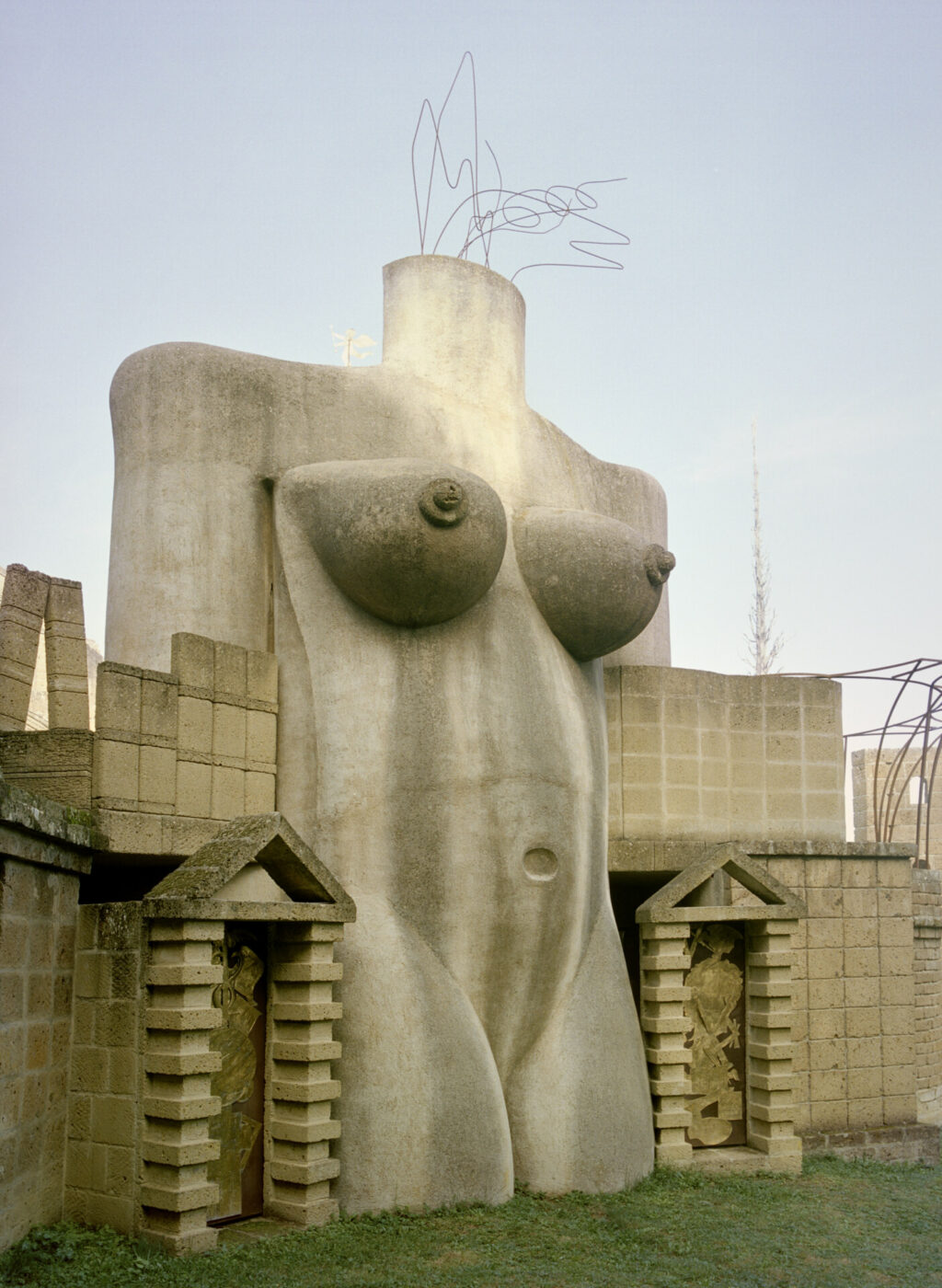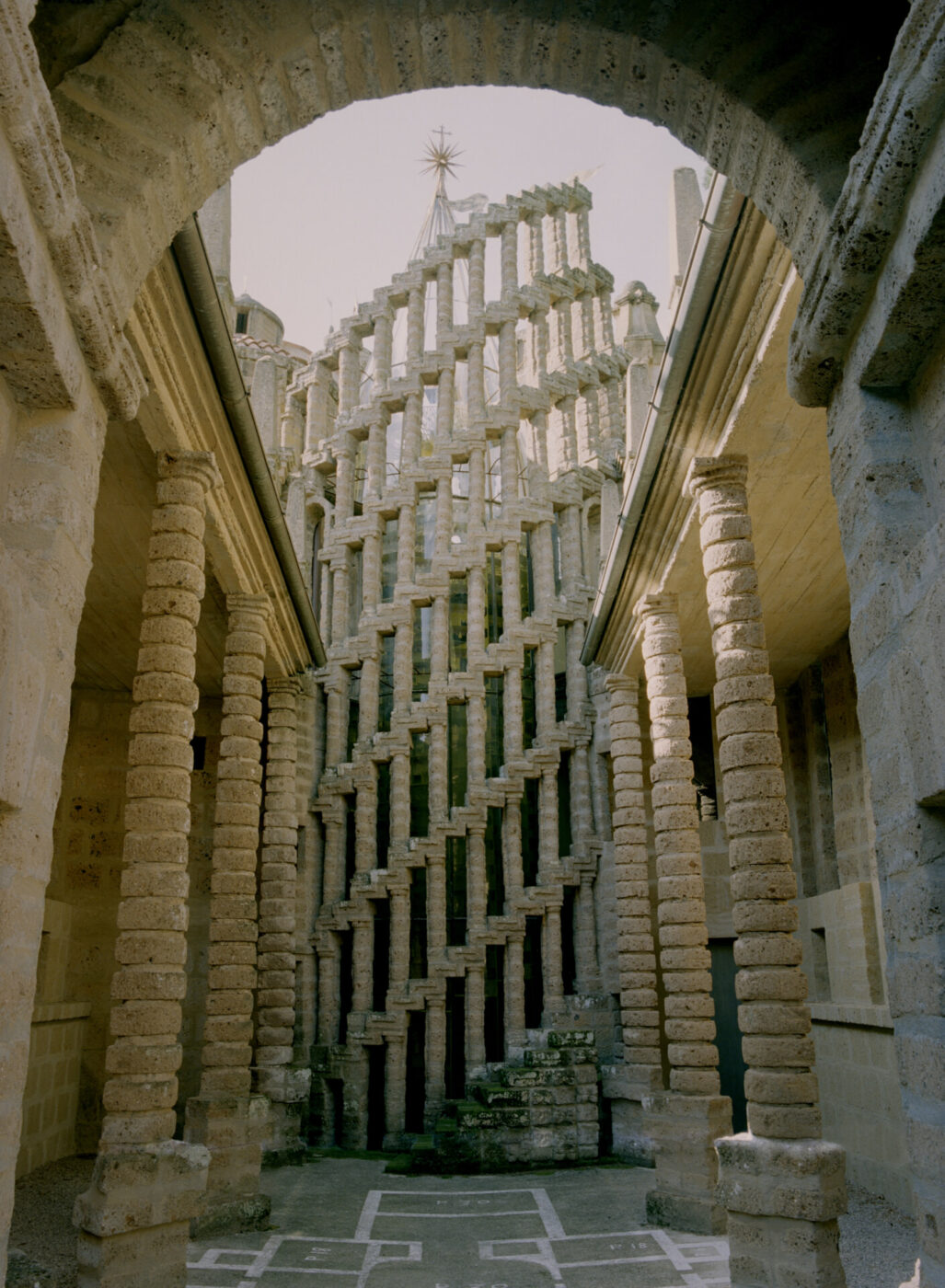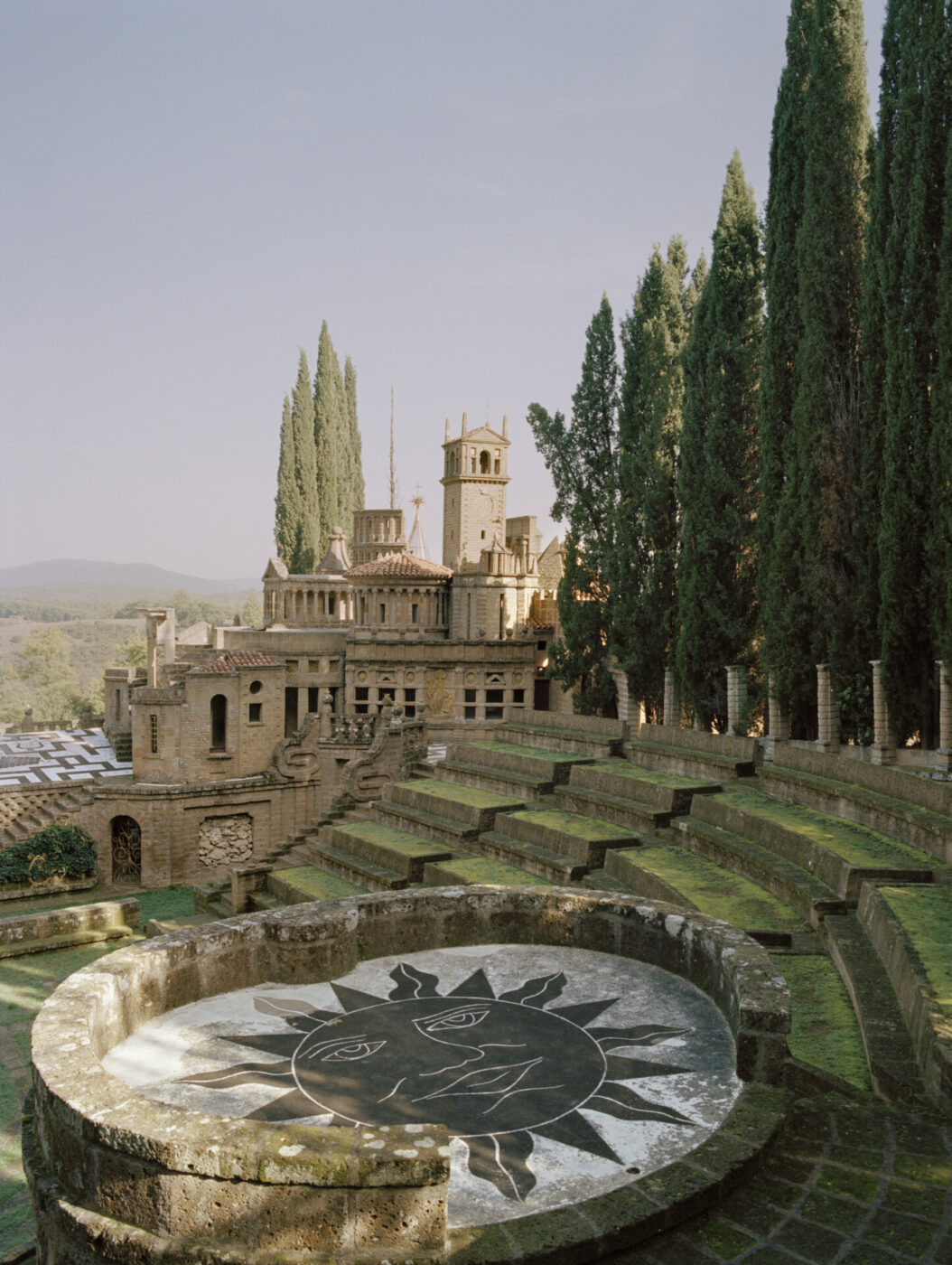“Whatever you do, don’t arrive late. And by the way, I heard the owner is insane.” These words of caution were given to me every time I shared my plans for an upcoming tour I had finally booked to La Scarzuola, nestled in the virtuous little Umbrian countryside province of Montegabbione (Terni). As I understood from my reading, the destination is “a complicated property”, a 13th-century Franciscan monastery transformed into some kind of surreal architectural dreamscape in the 1950s via what sounded like a surge of pure genius–or madness. La Scarzuola is a pilgrimage for the curious, to say the least.
My anticipation heightened in the days leading up to my visit, when La Scarzuola’s current “insane” owner and custodian, Marco Solari (who has been known to abuse his visitors by instructing them to “go to hell”) finally responded to my question-filled emails with two-word answers only–“Sì sì’, “…alle 11”–until I was lucky enough to receive: “Basta presentarsi grazie” (“Just show up thanks”). Proudly displayed above Solari’s photo online is an icon of a toilet crowned with stars above its seat, which seems like the personal crest of a madman. The combined banality and brilliance of this icon fascinated me. I was in for a real treat; I could feel it in my bones.
…Rushing to get there before 11 o’clock, rushing not to arrive late as everyone warned me. Only a fool arrives late to La Scarzuola! It’s a crisp November morning in Umbria, and the sun is thawing frosty vineyards. A double espresso down, and I’m ready to do something crazy. From the tiny town of Fabro Ficulle, a driver takes me past the even tinier hilltop town of Montegiovane as we approach our final destination. “Attenzione signorina, I hear the owner is insane!” he warns me with a grave look, as we proceed down a desolate side road and eventually pull up outside the property’s ancient wooden front gate where I’m dropped off at 10:17 AM. Insanely early, certainly by Italian standards.
I never say no to a monastery tour–especially on a Sunday morning–but I sense there’s a lot more than sacred going on behind these stone walls. Adored among the Milanese bourgeoisie, eccentric architect, designer, and artist Tomaso Buzzi bought La Scarzuola in 1956, infatuated by the idea of using the property to realize his own personal “folly”. Buzzi had put his name to everything from cutlery designs for Milan’s Sambonet to fabrics for Ravasi–and was also a long-time collaborator of Gio Ponti–but this architectural playground was his masterpiece, a place that epitomized his design philosophy and the brilliance of a boundless imagination that could dream up new realities inspired by the human experience.
What came to be was Città Buzziana, a bizarre assortment of gateways resembling birth canals, phallic towering sculptures, cryptic symbols stamped in stone, and sprawling gardens bearing ancient secrets (…just as an appetizer) that lure visitors into an otherworldly experience of the sacred and the profane. In fact, when Buzzi’s friends first saw his plans for this “Ideal City”–a dreamscape of architectural illusions where reality and surrealism collide in some kind of flamboyant tango–they deemed him completely mad. At Città Buzziana, all conventions of Italian architecture go down the toilet. So too does rationality, it seems.
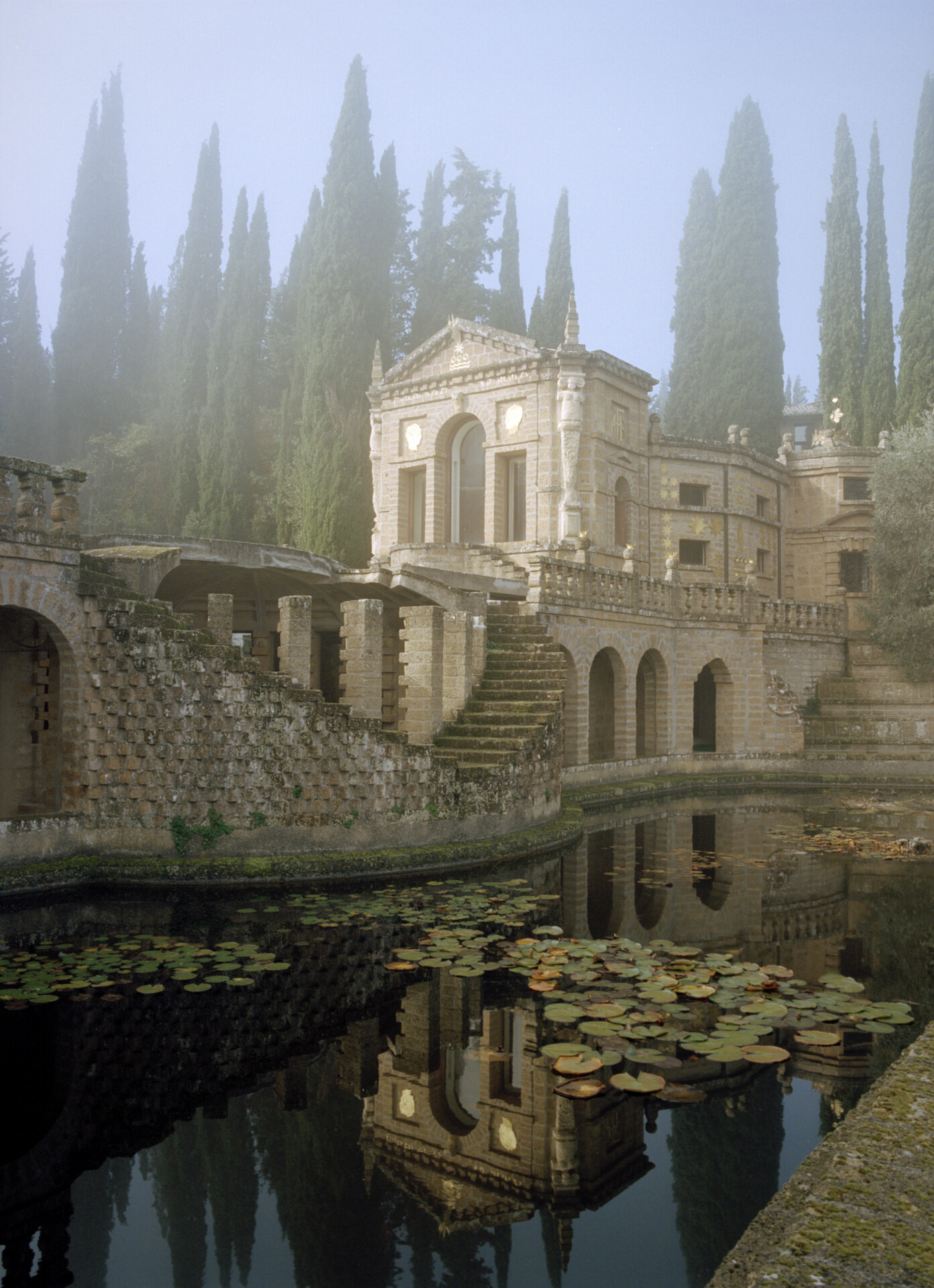
Photography by Stefan Giftthaler
Eleven o’clock approaches, and others have arrived for the tour, conducted exclusively in Italian. Several senior signori are riddled with anxiety, having heard that there’s no toilet for visitors at La Scarzuola. Some of us wide-eyed, others petrified, we edge closer to the front gate like the crowd waiting for Willy Wonka to emerge from his chocolate factory. A door beside the gate opens at 11 AM on the dot. One by one we’re whisked through and directed to the far end of the former monastery’s cloister, where a man in a cream fleece tracksuit slowly paces up and down the yard with a hand on his head. Marco Solari, nephew of Tomaso Buzzi and current resident of La Scarzuola, doesn’t greet his Sunday morning guests with a “buongiorno” or a “buona domenica”. Rather, he launches straight into a spirited spiel which begins something like:
“At first, you won’t understand a thing. You come from another world which is different from this world. You come from a world where you are expected to do certain things in certain ways. But I’m about to bring you into a world where you’ll do very different things. Don’t worry, it grows on you!”
After every few sentences, Solari breaks out into an almighty cackle that comes from the Franciscan depths of his lungs. Even if something isn’t particularly funny, he laughs. He looks into the faces of his guests with a wicked little glint in his eye and continues with his “welcome”. He’s a character, alright. But, insane? It’s too early to tell for sure. I lose count of how many times he says the word “c*zzate” in his opening address, and he seems to use the word “vagina” in place of full stops. Solari prepares us for some kind of inner journey we are about to undertake as we make our way through the “theatrical machine” of Città Buzziana, a metaphysical “rebirth”, if you like. From the Sacred City (the former monastery on top of La Scarzuola’s hill) we are to venture down to the Profane City at the bottom of the hill (Buzzi’s architectural follies), eventually (and hopefully) ascending back to the top of the property again in one piece, at which point we will have reached “Paradise”. The lady next to me puts both hands over her kid’s ears every time Solari opens his mouth. La Scarzuola ain’t no place for the young ones.
“Is this man for real? I never dreamed I’d come across something like this in Umbria,” whispers an elegant signora in pearls and a leopard-print coat to her friend, horrified, but secretly relishing every single minute of the experience like the rest of us are. “Umbria! Of all places!” replies her friend. The more Solari spoke, however, and the more I saw of his uncle’s Ideal City, the more I let myself (and all good sense) surrender to La Scarzuola. Perhaps concerningly, it didn’t take me long to feel right at home there myself, a place where logic and rationality take a complete hiatus. This in itself was quite a revelation to me.
I dart to the front of the group as Solari leads us down a winding stone path to a huge tree-lined stone amphitheater, one of seven “Theatres of Life” on the property. Here, we have our first of several “Madonnaaa miaaa!” moments of the morning, as our visual perception systems attempt to process the bizarre architectural fairground that lies before us. Solari points to the Theatre of the Bees crowning the amphitheater to the left, and to the right, The Acropolis, a culmination of mini classical archetypal buildings including the Parthenon, the Colosseum, the Temple of Vesta, and the Pantheon, all piled together as a micro “city within a city.” We haven’t just entered Buzzi’s Ideal City, we’ve entered the boundless realm of his imagination in which chaos, curiosity, humanity, infinity, life, and death are just the beginning. A giant stone eye in the middle of the amphitheater watches our every move. It’s the eye of “ATB” (Architetto Tomaso Buzzi), as his nephew explains. Inside this irrational metaphysical wonderland built by Buzzi over the course of 15 years, nobody has a damn clue where to look first.
Truth be told, the only fool at La Scarzuola is me, arriving with a less than half-charged phone that died from sensory overstimulation within 20 minutes of the experience. Solari proceeds with his tour, and we proceed with our respective journeys through the depths of our psyches. On we travel through a labyrinth of architectural eras and styles observed in a series of stone structures and sculptures across the property, including the Musical Staircase of Seven Octaves and the Mouth of the Stone Whale. The former is a spiral metal staircase with a steel wire running down the steps, which makes a musical sound whenever the wire is tripped–which means music is made by walking up and down the staircase–while the latter has the form of a giant stone mouth that figuratively “swallows” guests in an evocation of the myth of Jonah.

Photography by Stefan Giftthaler
Down another hill and another “Madonnaaa miaaa!” moment hits us in the face: The Temple of the Female Giant and Mother Earth, a towering stone sculpture of a headless female form, with stark modular breasts and nipples, a geometric navel, and monumental thighs that seem to grow up from the fertile soil. Oh yes, she has a vagina too! Part ancient Aztec deity, part futuristic dream-machine, she seems like an eternal celebration of female prosperity. The lady next to me has two hands over her kid’s eyes at this point. I walk over and touch the stone woman’s left-side appendix region, and Solari notes:
“We have to understand that the vagina is the center of everything. How did Dante Alighieri reach paradise after being stuck in hell and purgatory? Beatrice helped him. And who is Beatrice? Beatrice is the vagina.”
Grande. At the very least, I now understand that our metaphysical journey through this adults-only architectural feat reflects various aspects of Dante’s Divine Comedy; a kind of initiation process in which every door, gate, and passage we traverse symbolizes a stage in our rebirth. In this sense, we are coming out of stone “wombs” left, right, and center. Our ultimate “purification”, we soon discover, would happen once we passed by the Temple of Apollo (a circular temple with an enormous dead Cypress tree in the middle) and the Tower of Mediation and Solitude (a column-shaped tower with geometric peephole windows, reminiscent of the Colonne Détruite in France’s Désert de Retz garden), and eventually reached the top of a column-lined staircase called The Stairway of Life. I’m delighted to report that I did indeed make it to “paradise” on that Sunday morning at La Scarzuola, and so did almost everyone else in the tour (to my knowledge).
From this vantage point at the top, I look down at Città Buzziana beneath me. I can see the entire “Path of Life” I’ve just traveled through La Scarzuola’s maze of stone follies built into the undulating Umbrian landscape. Do I feel any different after undergoing the strangest Italian voyage I’ve ever experienced in my life? Maybe. Maybe not. It must be said, some curious sensations surge inside me at that moment, which I can only describe as an awareness of my existence beyond the bodily realm. A reflective moment on a hilltop in Umbria can do this to you, and so can a few hours at Città Buzziana. “What a life,” I say to whoever happens to be standing next to me, both of us like stone statues transfixed on something and nothing in the distance. It’s Solari. He smiles at me for a second and then disappears without a trace, leaving us visitors to show ourselves out.
I couldn’t stop thinking about La Scarzuola in the weeks following my visit. The place made absolutely no sense, and yet, it made perfect sense to me. The fruit of Buzzi’s imagination, his absurd worldly perception that gave life to this architectural frenzy, is ultimately a profound ode to humanity. There’s a bit (or a lot) of Città Buzziana inside us all. La Scarzuola draws on the collective intrigue of art, philosophy, history, and human experience to remind us that life itself is a kind of theatrical play, and we humans are merely “ants” (as his nephew affectionately called us) in a grander scheme of space and time. Don’t take it too seriously.
Of one thing I was absolutely certain: who the hell needs Disneyland when you have La Scarzuola?
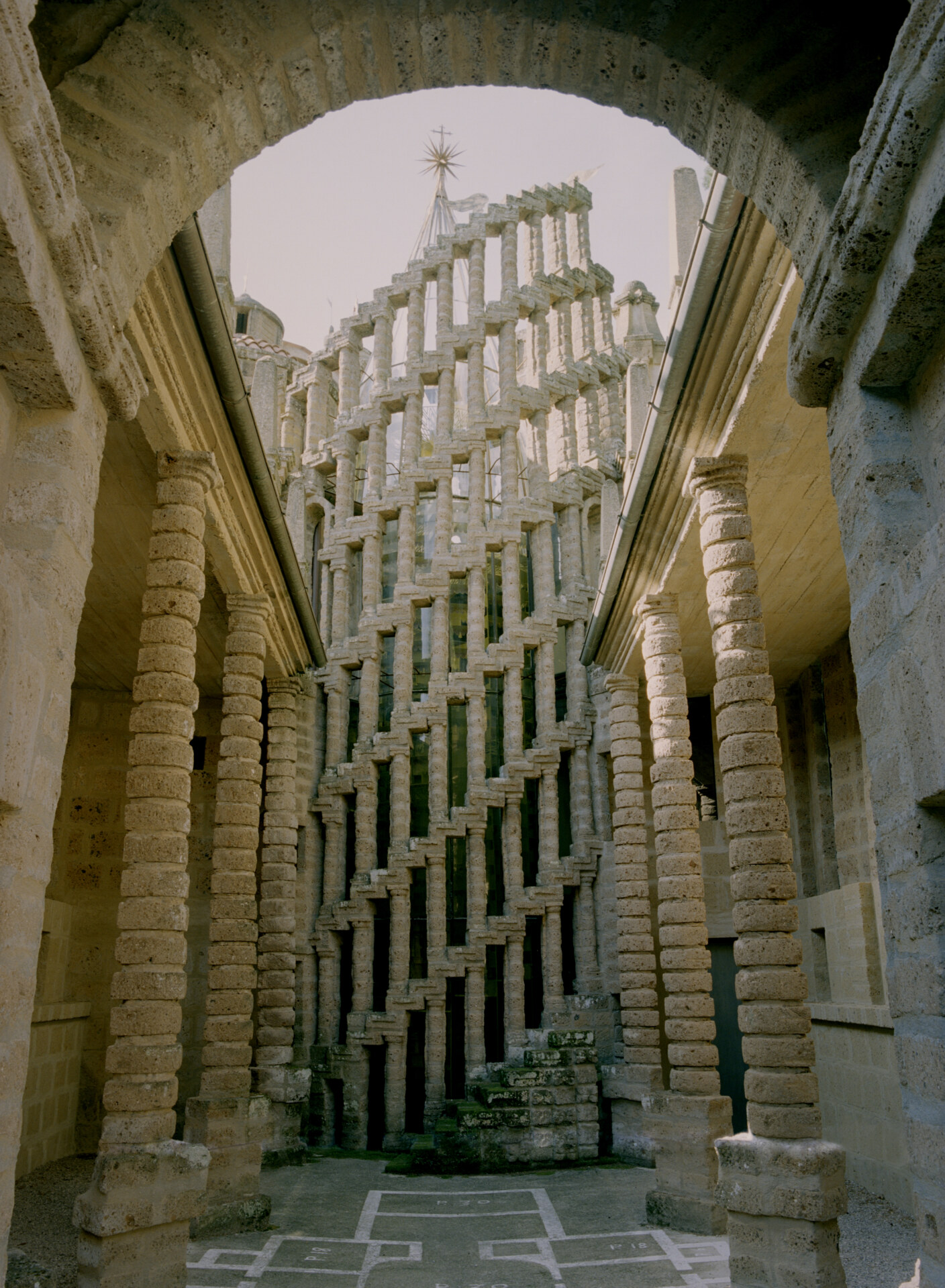
Photography by Stefan Giftthaler

